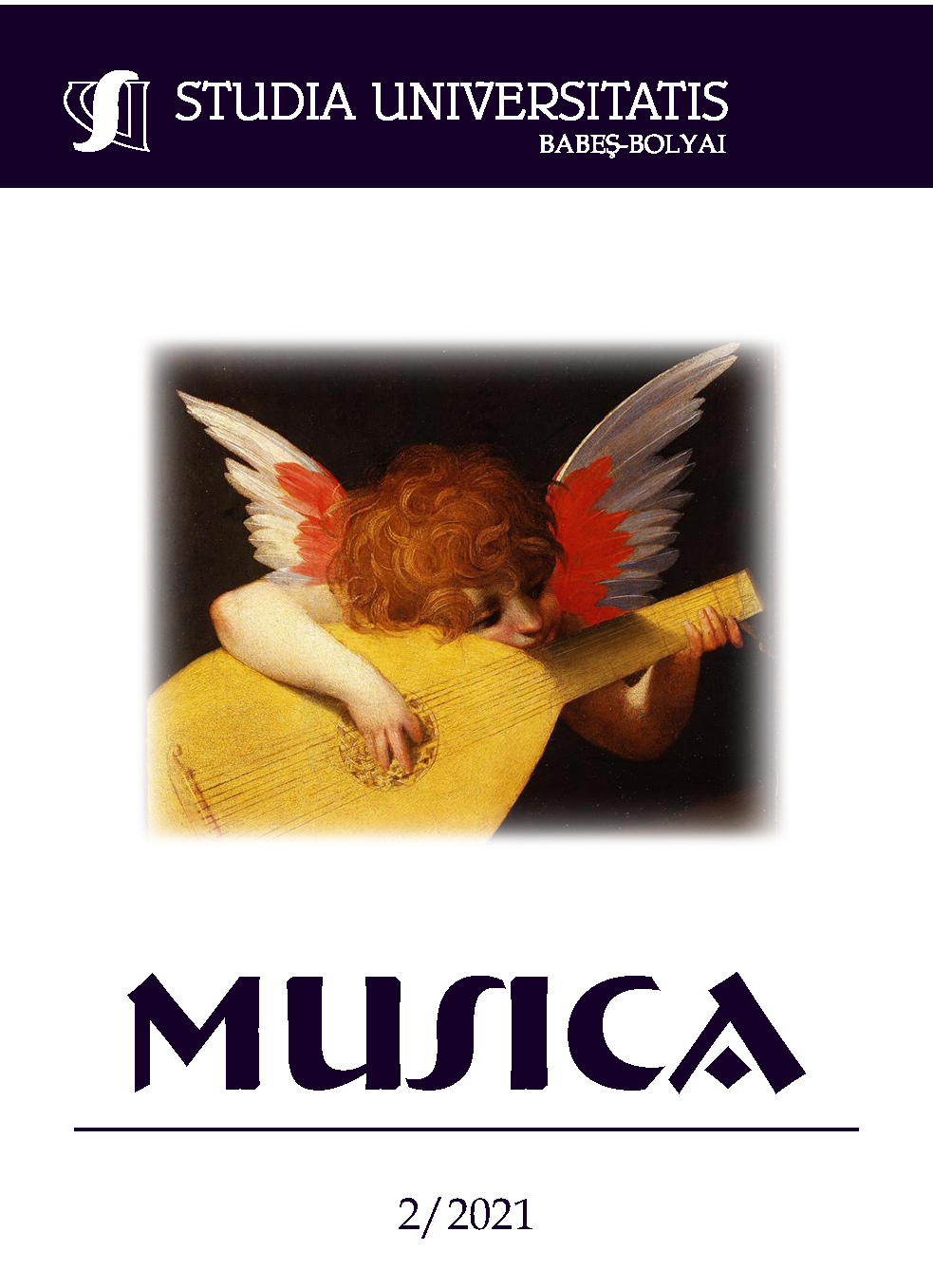THE ROLE OF THE HUNGARIAN ROMAN CATHOLIC CHURCH COMMUNITY SONG IN THE TRANSFORMATION PROCESS OF THE ARMENIAN LITURGICAL REPERTOIRE IN TRANSYLVANIA
DOI:
https://doi.org/10.24193/subbmusica.2021.2.18Keywords:
Armenian, Transylvania, liturgical music, religious folk songs, Frumoasa, GheorgheniAbstract
This article presents and briefly discusses the transformation process of the Armenian liturgical repertoire in Transylvania, through the prism of contemporary descriptions and manuscript sources dating from the eighteenth and nineteenth centuries. As known, most of the Armenian population settled in the Transylvanian area in the seventeenth century. In time, there followed a gradual and definitive assimilation into the native Hungarian (Szekler) population, during which Transylvanian Armenians lost their mother tongue. Schools with Armenian as the language of instruction gradually closed, and the Armenian liturgy also underwent major changes following the adherence of Armenians to the Roman Catholic Church. Currently the Armenian language and culture are on the verge of extinction, most Armenian churches open only on pilgrimage days, once a year. The Armenian population retains only the language of the liturgy and some traditions (more of a gastronomic nature), which in fact represents the danger of the disappearance of everything that this ethnic group has built beneficially in the service of the community over the centuries.
Rezumat. ROLUL CÂNTECULUI COMUNITAR AL BISERICII ROMANO-CATOLICE UNGUREȘTI ÎN PROCESUL DE TRANSFORMARE A REPERTORIULUI LITURGIC ARMEAN DIN TRANSILVANIA. Acest articol prezintă și discută pe scurt procesul de transformare a repertoriului liturgic armean din Transilvania, prin prisma descrierilor contemporane și a surselor manuscrise din secolele al XVIII-lea și al XIX-lea. După cum se știe, cea mai mare parte a populației armenești s-a stabilit în zona Transilvaniei în secolul al XVII-lea. În timp, a urmat o asimilare treptată și definitivă cu populația autohtonă maghiară (secuiască), în timpul căreia armenii transilvăneni și-au pierdut limba maternă. Școlile cu limba de predare armeană s-au închis treptat, iar liturghia armeană a suferit, de asemenea, modificări majore în urma aderării armenilor la Biserica Romano-Catolică. În prezent, limba și cultura armeană sunt pe cale de dispariție, majoritatea bisericilor armenești fiind deschise doar în zilele de pelerinaj, o dată pe an. Populația armeană păstrează doar limba liturgică și unele tradiții (mai mult de natură gastronomică), ceea ce reprezintă de fapt pericolul dispariției a tot ceea ce acest grup etnic a construit în mod benefic în slujba comunității de-a lungul secolelor.
Cuvinte cheie: Armenească, Transilvania, muzică liturgică, cântece populare religioase, Frumoasa, Gheorgheni
References
Kodály, Zoltán. A Magyar népzene (Hungarian Folklore). Musical Publishing House, 1989.
Benedek, Zsigmond. “A csíkszépvizi kéziratos örmény énekeskönyv-töredék.”(The fragment of a collection of songs in the manuscript from Frumoasa). Örmény diaszpóra a Kárpát-medencében (Armenian Diaspora in the Carpathian Basin). PPKE, Piliscsaba, 2007.
A szépvízi örmények (The Armenians from Frumoasa). EMSZ, 2016.
Historia Domus of the Armenian-Catholic church in Frumoasa.
Historia Domus of the Armenian-Catholic church in Gheorgheni.
https://papageno.hu/featured/2019/07/arezzoi-guido-nem-csak-a-zenei-izlest-de-europa-szellemi-arculatat-is-megvaltoztatta/. Accessed 18 Jul. 2021.
http://epa.oszk.hu/00900/00997/00021/pdf/EPA00997_Letunk-2012-2_095-103.pdf. Accessed 18 Jul. 2021.
http://real.mtak.hu/88110/2/14_V_Szucs_Imola.pdf. Accessed 15 Jun. 2021.
Downloads
Published
How to Cite
Issue
Section
License
Copyright (c) 2021 Studia Universitatis Babeș-Bolyai Musica

This work is licensed under a Creative Commons Attribution-NonCommercial-NoDerivatives 4.0 International License.



